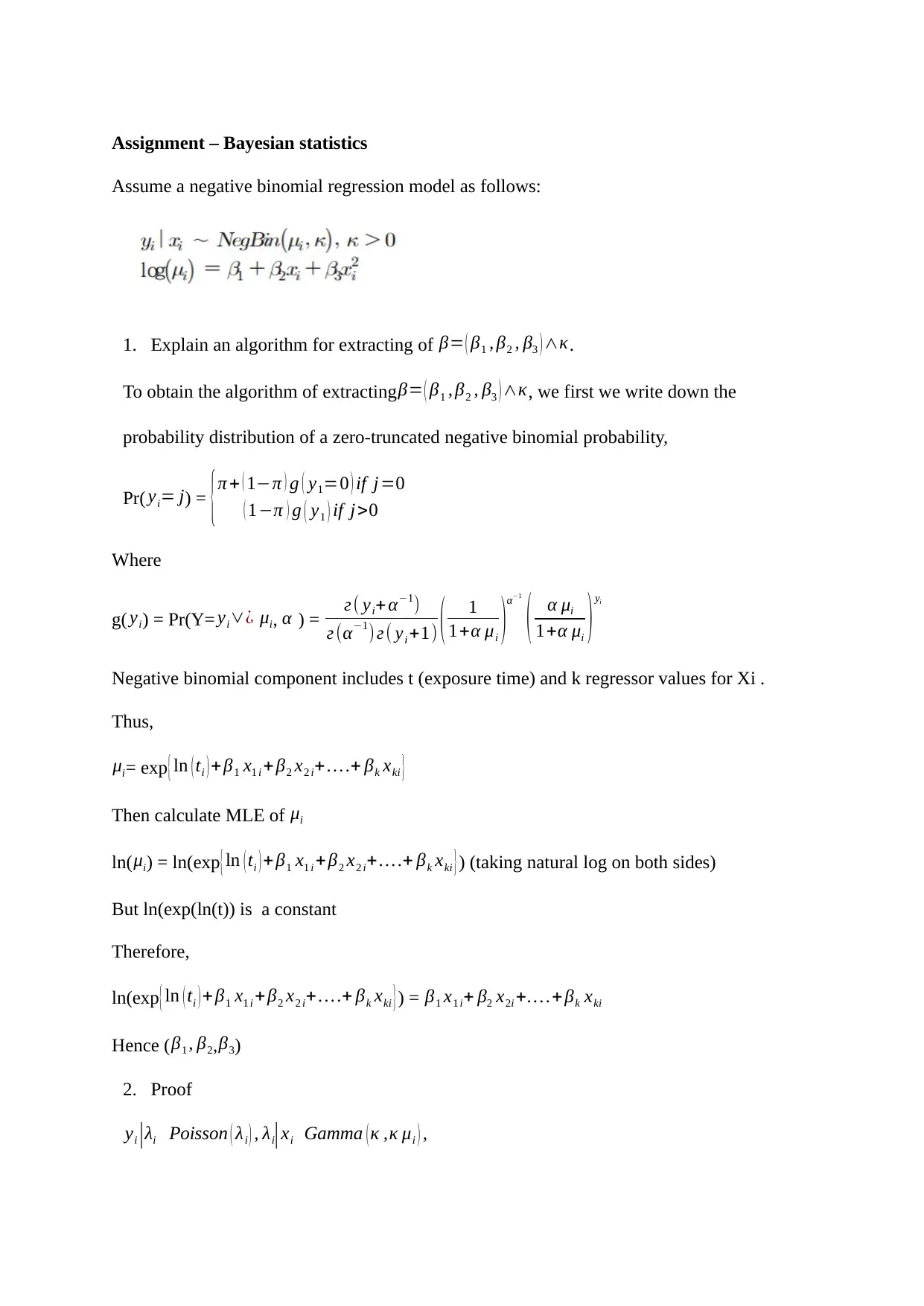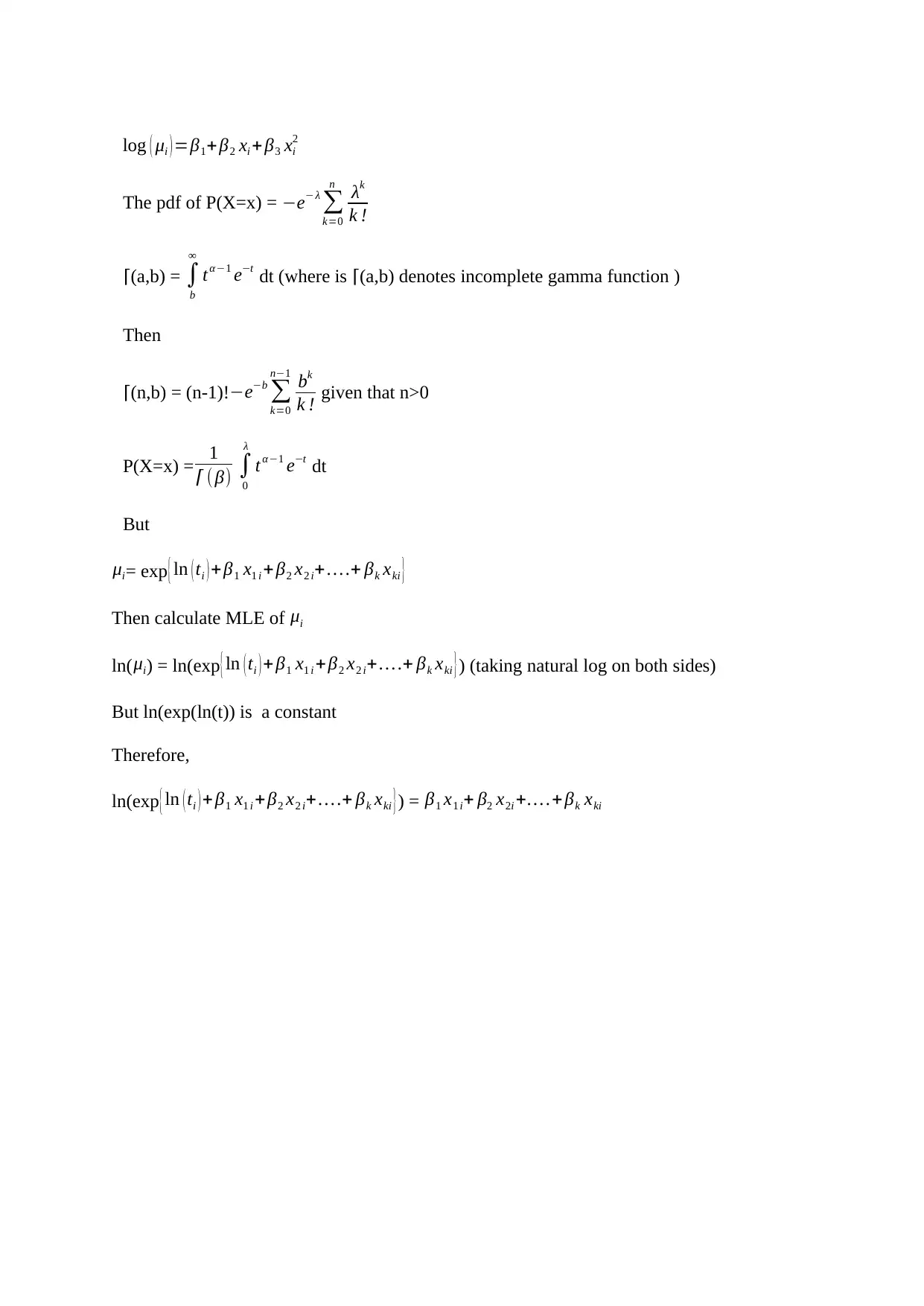Bayesian Statistics: Negative Binomial Regression Model and Proof
VerifiedAdded on 2023/05/28
|3
|569
|273
Homework Assignment
AI Summary
This assignment focuses on Bayesian statistics within the context of a negative binomial regression model. It explains an algorithm for extracting parameters β=(β1, β2, β3) and κ, detailing the probability distribution of a zero-truncated negative binomial probability. The assignment calculates the Maximum Likelihood Estimation (MLE) of μi and provides a proof relating Poisson and Gamma distributions, specifically y i|λi ~ Poisson(λi), λi|xi ~ Gamma(κ, κμi), and 2log(μi) = β1 + β2xi + β3xi - λ. The document includes mathematical formulations and steps for deriving key results related to the regression model.
1 out of 3










![[object Object]](/_next/static/media/star-bottom.7253800d.svg)